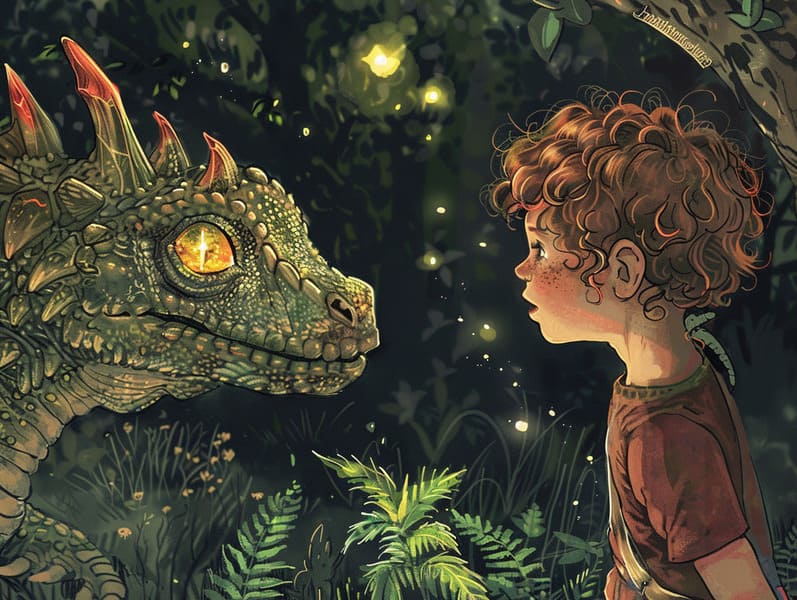The Origins of Historical Fairy Tales with Its Unchanging Loveliness.
The Origins of Historical Fairy Tales with Its Unchanging Loveliness.
Blog Article

Short fairy tales have timeless appeal. These narratives have been shared from one generation to the next millennia before they were ever recorded. They emerged from a variety of civilizations, including European traditions. They were initially disseminated among elders, often carrying themes and messages related to the societal norms and beliefs of the time.
The renowned Brothers Grimm, Jacob and Wilhelm, were among the first to assemble many of these beloved narratives. Their published works, "Grimm's Fairy Tales," included stories like "The Story of Cinderella," "Hansel and Gretel," and "The True Story of Snow White," which have since become essentials in the world of iconic fairy tales. Similarly, Hans Andersen's magical narratives, such as "The Little Mermaid," and "The Story of the Ugly Duckling," have gained the love worldwide, solidifying their place in the pantheon of beloved fairy tales.
Despite being ancient, classic fairy tales remain as significant as ever, especially as nighttime stories for kids. These magical stories are now available in different formats, including artistically illustrated books, fantastical animations, and internet fairy tales.
Their lasting appeal can be attributed to several fascinating points:
Significant Morals: Timeless fairy tales often illustrate important moral lessons. Fairy tales like "The Boy Who Cried Wolf" teach the significance of being truthful, while "The Race of the Tortoise and the Hare" stress the traits of resolve and humility. These narratives offer the young clear distinctions between moral and immoral, shaping their moral compass in a tender yet meaningful way.
Sympathy and Perception: Traditional fairy tales frequently illustrate heroes facing trials and tribulations, urging young readers to feel with their struggles and cheer for their triumphs. For instance, "Beauty and the Beast" conveys the virtue of seeing beyond looks to realize the true being of a character, nurturing understanding and recognition.
Cultural Perception: Many ancient fairy tales are deeply embedded in the cultural contexts from which they developed. Delving into these narratives can provide captivating looks into different cultures, encouraging a sense of cultural understanding and comprehension.
Imagination and Innovation: The imaginative elements in ancient fairy tales—enchanted lands—enliven children’s creative dreams. These stories carry readers to magical realms, firing up inventive thinking and a sense of delight that lasts a lifetime.
Classic fairy tales are not only alluring but also illuminating. They function as mesmerizing tools in nurturing various mind and heart abilities in young ones. When ancient fairy tales are narrated, they cultivate language acquisition by showing new terms and meanings and complicated sentence structures. This practice also fosters auditory perception and mental focus, as young ones follow the story, keen to see what happens next.
Furthermore, analyzing the themes find it here and characters of timeless fairy tales can promote intellectual skills and thinking skills. Young ones are guided to spot patterns, make predictions, and know cause and effect. These deliberations also ease kids verbalize their thoughts and feelings, fostering their emotional intelligence.
In today’s cyber age, the abundance of online fairy tales has made these narratives more acquirable than ever. Digital sites and digital apps supply extensive collections of ancient fairy tales that can be looked at or listened to anytime, anywhere. Fairy tales read out loud are particularly popular, extending an interactive way for little ones to take part in these entrancing tales. Sound books and read-to-me stories guide characters and settings to life, often supplemented by bewitching sound effects and melodies that boost the story journey.
The timeless allure of traditional fairy tales lies in their ability to shift to today's world while holding onto their central values. Contemporary retellings of these narratives often show more different protagonists and modern settings, making them relatable to today’s audience. However, the core values of gallantry, generosity, and fairness remain unchanged, continuing to resonate with listeners of all ages.
Ancient fairy tales also offer a sense of calm and closeness. They feature a tidy narrative with a transparent beginning, middle, and end, often wrapping up with the termination of conflicts and the triumph of virtue over corruption. This regularity can be reassuring for kids, spreading a sense of firmness in an shifting world.
Timeless fairy tales continue to spellbind and train new generations, maintaining their loveliness and meaningfulness in modern society. As kids' bedtime tales, they grant access to a perfect blend of charm and enlightenment, backing moral values, empathy, and creativity. The prevalence of digital storybooks and the commonness of fairy tales narrated promise that these ancient stories remain acquirable to new generations.
By conserving and spreading these narratives, we continue to admire the rich tapestry of storytelling and cultural heritage. Whether you are delving into a vibrantly illustrated book, viewing a internet library, or hearing an sound book, the charm of old fairy tales is always within reach. These tales demonstrate of the immortal presence of fairy tales and its ability to hold us together across generations and cultures.
Be it you are reading a colorful picture book, experiencing a online library, or listening on an read-aloud story, the spell of bedtime fairy tales is always within reach.
These narratives illustrate of the invariable power of fairy tales and its ability to hold us together across time and space, forging a link that captivates and teaches alike.